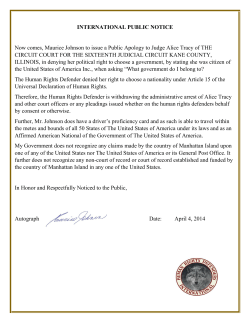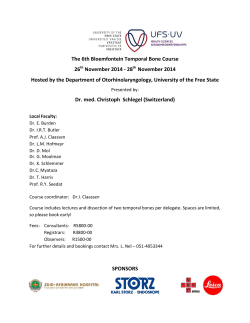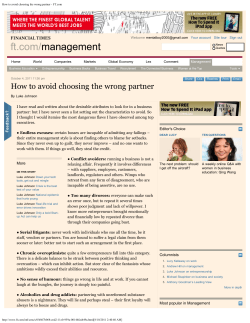
Conjunctival UV Autofluorescence in Eye Care Practitioners
Conjunctival UV Autofluorescence in Eye Care Practitioners James S Wolffsohn PhD FBCLA Tom Drew BEng Anna Sulley BSc FBCLA* Ophthalmic Research Group, Aston University, Birmingham, UK * Johnson & Johnson Vision Care, Wokingham, Berkshire, UK - SPONSOR Results • 62% had some conjunctival damage indicated by UV autofluorescence • Larger area (p = 0.005) nasally (2.95±4.52 mm2) than temporally (2.19±4.17 mm2) Methods • 307 eyecare practitioners (ECPs) from Czech Republic, Germany, Greece, Kuwait, Netherlands, Sweden, Switzerland, UAE & UK attending education events in 2012-3 • Age 38.5 years ± 12.3 (range 19-68), 40% male • Right eyes imaged nasally & temporally using a Nikon D100 camera and dual flash units through UV filters, as described by Coroneo (Ooi et al., 2006) • UV autofluorescence outlined using Image J software • Demographics & lifestyle recorded via questionnaire with drop down menu Reference:: Ooi J-L et al., Ultraviolet fluorescence photography to detect early sun damage in the eyes of school-aged children. Am J Ophthalmol 2006;141:294-8. *Johnson & Johnson Vision Care is part of Johnson & Johnson Medical Ltd. Area of Conjunctival Damage (mm2) Purpose Autofluorescence of UltraViolet (UV) light from the conjunctiva highlights early damage not always seen in white light, occurring in localised areas, and can be present from a young age which map to active cellular changes due to UV and environmental exposure. UV damage greater nasally with none vs CL/specs UV damage greater nasally with none vs CL/specs (nasal p = 0.011,temporal p=0.958) (nasal p = 0.011,temporal p=0.958) 40 Nasal Temporal 30 20 10 0 20 30 40 50 60 70 Age (years) Check today’s UV intensity in Manchester Author Contact Details: j.s.w.wolffsohn@aston.ac.uk UV damage not related to sun exposure UV damage not related to sunglasses usage (nasal p=0.358; temporal p=0.777) (nasal p=0.112; temporal p=0.639) Conclusion • UV conjunctival damage common even in Europe and Middle East amongst ECPs - hence importance of recommending comprehensive UV protection of wide brimmed hat, sunglasses and UV blocking CLs • Greater damage nasally explained by peripheral light focusing effect
© Copyright 2025












